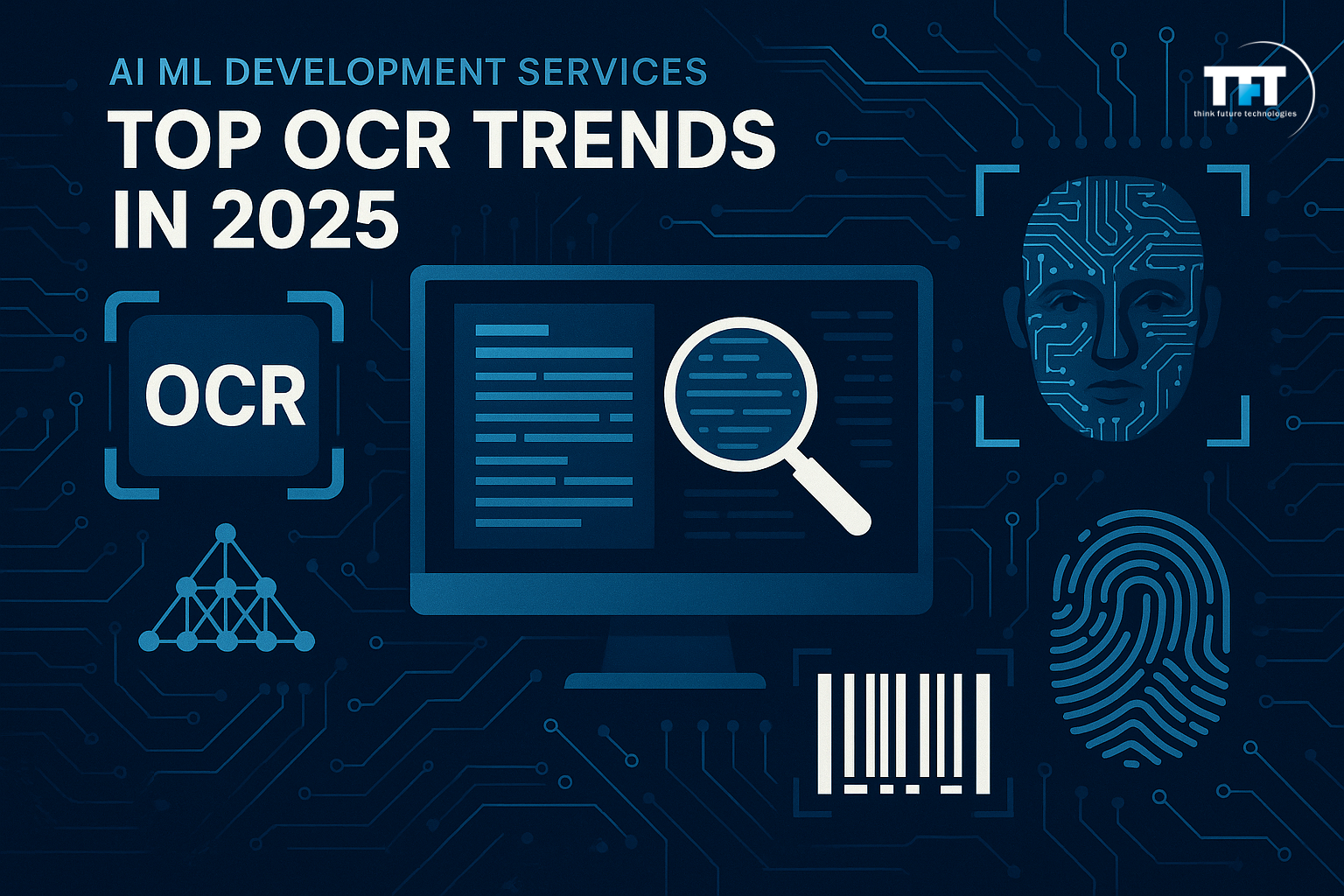
AI ML Development Services: Top OCR Trends in 2025
With the rise of AI and automation, ai ml development services are transforming how we interact with data—especially through OCR (Optical Character Recognition). In 2025, OCR tools have evolved far beyond digitizing paper—they’re now context-aware, multilingual, and deeply integrated into enterprise workflows.
As someone who works closely with businesses integrating AI-powered solutions at Think Future Technologies, I’ve seen firsthand how OCR is unlocking productivity and precision across industries. Let’s explore the top OCR trends shaping the future.
Contextual Intelligence: OCR Gets Smarter with Language Models
OCR in 2025 is no longer about simple text extraction—it’s about understanding content. With large language models powering intelligent recognition, systems can now:
- Interpret complex legal and medical documents.
- Extract sentiment and tone.
- Apply contextual metadata tagging.
This level of nuance is possible through advanced machine learning services that combine vision with language comprehension.
Learn more at Google Research.
Alt text: AI-driven OCR system understanding medical contracts
Multilingual Processing through Deep Learning
Thanks to artificial intelligence development, OCR systems are breaking language barriers. From regional Indian languages to niche dialects in Africa, the latest tools can:
- Recognize over 100 global languages.
- Adapt using transfer learning.
- Provide real-time translation and tagging.
Meta’s language model breakthroughs are shared here.
Alt text: OCR software interpreting text in Hindi, Thai, and Arabic
Mobile-Ready OCR from Machine Learning App Development Services
OCR is moving to the edge. Lightweight models are enabling OCR to run:
- On smartphones and IoT devices.
- In logistics, education, and e-commerce apps.
- With offline capabilities and real-time output.
This shift is driven by machine learning app development services that focus on compact, energy-efficient deployment.
Alt text: User scanning invoice via mobile OCR app
Handwriting Recognition with Generative Networks
Today’s AI can decipher the toughest handwriting. Enhanced by generative adversarial networks and deep recurrent models, OCR can now:
- Accurately transcribe cursive scripts.
- Process handwritten prescriptions.
- Digitize historical records.
Read how Stanford AI advances handwriting tech here.
Alt text: AI model converting old handwritten text into digital format
Understanding Layouts: Tables, Forms, and Structured OCR
In enterprise settings, OCR needs to decode structure—not just characters. Tools now use vision transformers to recognize:
- Tables, rows, and columns.
- Checkbox selections and form fields.
- Document hierarchy and relationships.
This level of structure extraction is possible thanks to innovations in ai and ml development services tailored to document automation.
Alt text: OCR extracting tables and fields from a scanned form
Document Workflows Powered by OCR & Automation
OCR is now a gateway to end-to-end automation. With machine learning development services, companies are embedding OCR into entire pipelines:
- Data capture → Classification → Validation → Storage
- Seamless ERP and CRM integration
- Intelligent routing and tagging
Discover IBM’s document automation here.
Alt text: Flowchart of OCR in automated business workflows
Security and Compliance as Core Features
As OCR becomes essential in regulated industries, it’s being fortified with:
- Differential privacy safeguards.
- Built-in GDPR and HIPAA compliance.
- Fairness checks for multilingual bias.
These features are increasingly requested by enterprises working with ai and machine learning development services in healthcare and finance.
OCR Meets Generative AI for Restoration & Enhancement
Imagine OCR that fills in missing text or reconstructs damaged pages. In 2025, generative models are enabling:
- Repair of torn or faded documents.
- Enhancement of low-quality scans.
- Predictive language completion.
Explore generative AI document tools at OpenAI.
Alt text: AI restoring missing parts of a scanned document
Plug-and-Play APIs from Machine Learning Services Companies
OCR is being democratized. Pre-trained APIs from leading machine learning services companies allow businesses to:
- Launch OCR in hours, not weeks.
- Customize output formats.
- Access real-time analytics dashboards.
This API-first approach is fueling OCR use in SMBs and startups.
Sustainable AI: Greener, Lighter OCR Models
With ESG goals in mind, modern OCR models are:
- Smaller in size, with lower compute demands.
- Trained using efficient pipelines.
- Hosted on carbon-neutral cloud infrastructure.
Eco-conscious enterprises now choose vendors offering sustainable ai/ml development services.
The rapid advancement of OCR wouldn’t be possible without the power of AI and machine learning development services. From multilingual recognition to real-time automation, OCR in 2025 is about speed, context, security, and scalability.
At Think Future Technologies, we help organizations adopt smarter OCR—tailored to their workflows, markets, and compliance requirements. If you’re looking to digitize operations or automate document handling, now’s the time to act.
Start building with OCR that thinks.
Visit www.tftus.com
Recent Blogs
- The Gig Renaissance: Why Smart Businesses Hire Remote React Native Developers on Contract
- Hire Remote Golang Developers: Powering Cloud-Native and Microservices Growth
- Hire Best Remote Software Developers: Why AI Can’t Replace Human Expertise
- Low-Code RPA: Empowering Citizen Developers Through Automation
- RPA Software Solution: Intelligent Document Processing with RPA
Categories
- Agritech (1)
- AR/VR (5)
- Artificial Intelligence (55)
- Machine Learning (1)
- Blockchain (4)
- Business Intelligence (3)
- CRM (5)
- SalesForce (4)
- Data Engineering (8)
- Data protection (2)
- Development (103)
- Golang Development (16)
- Python Web Development (9)
- React JS (5)
- React native (10)
- Devops (3)
- Hire Developers (4)
- Internet of Things (IoT) (5)
- Kubernetes (2)
- Machine Learning (2)
- Mobile App Development (44)
- Node.js (7)
- outsourcing (7)
- Partnership (4)
- Performance Testing (3)
- RPA (24)
- Security (24)
- Strategy (1)
- Testing (110)
- Accessibility Testing (2)
- Automation Testing (22)
- Dynamic Testing (1)
- Manual Testing (3)
- Mobile App Testing (13)
- Offshore Software Testing (6)
- Penetration Testing Services (13)
- QA testing (16)
- Remote Software Testing (7)
- Software Testing (19)
- Website Design (22)